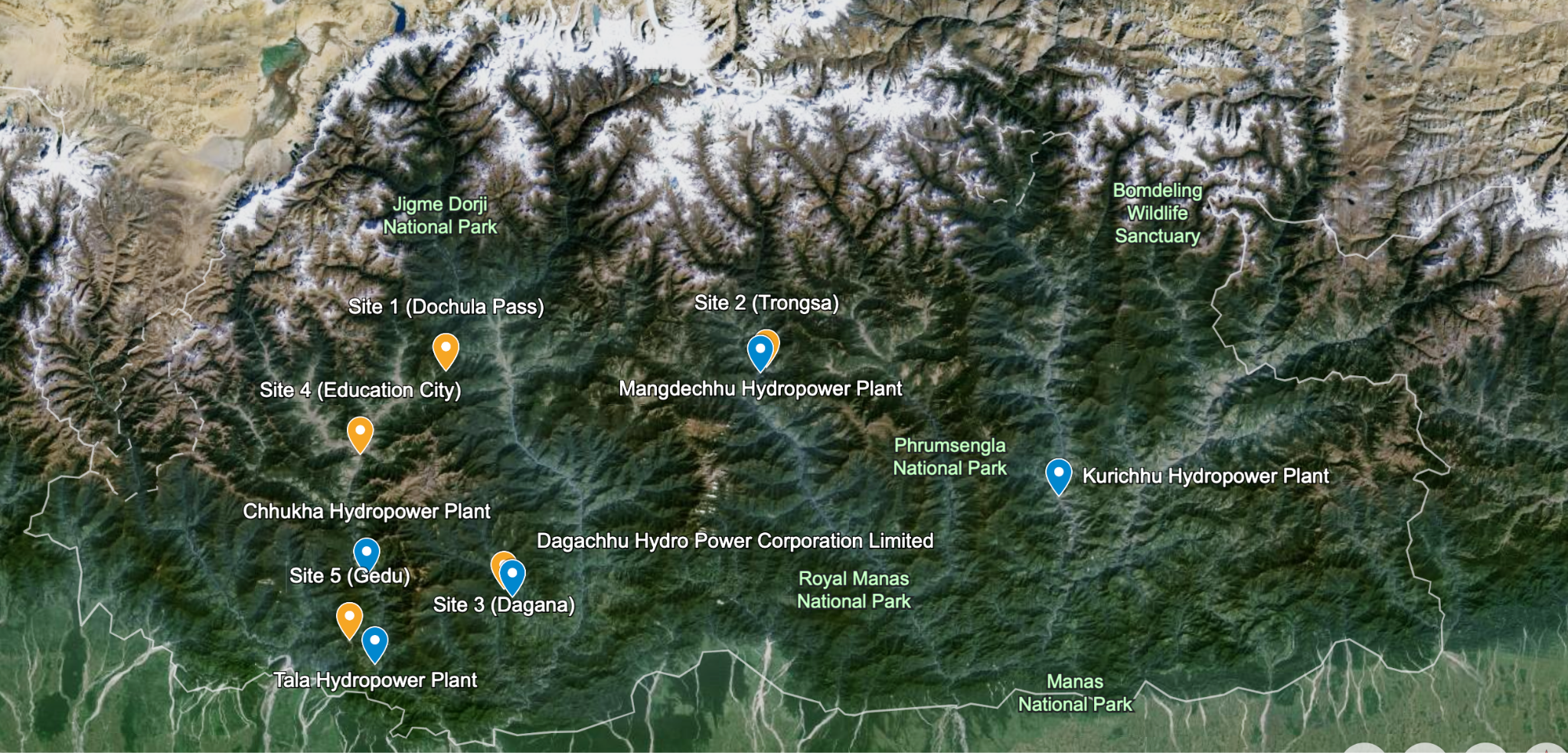[ad_1]

Earlier this month, media reports indicated that Bhutan invested nearly US$500 million in crypto mining facilities from July 2021 to June 2023, demonstrating the country’s increasing interest in the crypto mining sector. Bhutan, a lower-middle-income country in the Himalayas, has little economic diversification and nascent private sector development. With significant dependence on the hydropower, tourism and agriculture sectors, diversification of income streams and the development of a stable income base have often been debates of national importance. To expand its economy, the government is investing in the crypto mining sector. This article summarizes the growth of the crypto mining sector in the country and how such growth affects its economy and foreign policy.
Bhutan’s crypto mining sector
With large renewable hydropower reserves and a suitable climate to cool the mining infrastructure, Bhutan has emerged as a suitable location for crypto mining. Although the details of the mining operations are out of public knowledge, reports indicate the existence of a state-owned Bitcoin mine since 2017. This push comes for two reasons: Economic diversification and the use of crypto-mining technology to drive digital transformation in the country .
The framework provides conditions and specifications for crypto mining, including KYC, consumer protection, customer identification and different forms of RMA approval.
Bhutan’s crypto mining aspirations became clear when the Royal Monetary Authority (RMA) of Bhutan launched the Regulatory Sandbox Framework for Mining Cryptocurrency in January 2019. One of the main objectives for the introduction of this policy was the viability of crypto-mining as an investment in light of the country’s low-cost electricity and climate. The framework provides conditions and specifications for crypto mining, including KYC, consumer protection, customer identification and different forms of RMA approval. At the time of writing, Bhutan had five crypto mining facilities (see Map 1). Construction of the sixth facility—the Jigmeling data center—began during the first quarter of 2024.
China’s complicity
Bhutan’s growth in crypto mining can be divided into two phases—in the first phase, which probably started in 2020 and was financed by loans and bonds, Bhutan invested about US$540 million (21 percent of 2021 GDP) in mining . During this time, the RMA subscribed to three-year foreign currency bonds issued by Druk Holding and Investments (DHI) – the commercial arm of the Royal Government of Bhutan. These loans were to import infrastructure and equipment for crypto mining, a significant amount of which was from China. In 2021 and 2023, the imports were worth INR 4 billion; and in 2022 they were worth INR 12 billion. The latter accounted for 15 percent of the state budget. At the same time, Bhutan’s imports from China increased from INR 2 to 15 billion between 2020 and 2022.
Bhutan is less involved in importing equipment in this phase and aims to generate income by selling power, leasing the land, providing infrastructure and a legal framework and getting a share of profits.
The second phase, which started in late 2023, is dominated by private investment and technology. In this phase, Bhutan’s DHI teamed up with the Singaporean firm Bitdeer, owned by Wu Jihan, a Chinese national. The aim is to jointly develop green digital asset mining operations in Bhutan. They are keen to expand a 600 MW mining farm in Bhutan by 2026, for which Bitdeer is raising US$500 million in funds. The first 100 MW facility started operations in September and will house approximately 30,000 mining machines, imported directly by Bitdeer. Bhutan is less involved in importing equipment in this phase and aims to generate income by selling power, leasing the land, providing infrastructure and a legal framework and getting a share of profits. In the first quarter of 2024, only INR 48 million worth of IT equipment was imported by Bhutan.
India and hydropower politics
With the boom in energy-intensive industries, including crypto-mining, there has been a massive increase in domestic demand for electricity. Between 2014 and 2020, domestic energy consumption in the country varied between 1,400 and 1,800 GWh. However, by 2022, the total energy consumption in the country has increased significantly to 2,860 GWh. Much of this energy is consumed from India-backed mega hydropower projects. Map 1 uses publicly available data (here and here) on the locations of the Bitcoin mining centers and India-backed hydropower projects to demonstrate that these centers (except for Site 1) are close to the latter and likely consume energy from it.
Map 1. Mining sites and Indian hydropower projects in Bhutan

Note: Markers in blue: India assisted hydropower projects. Markers in yellow: Bitcoin mines
Source: Authors’ compilation
This increase in domestic energy consumption has caused Bhutan’s hydropower exports to India to decline. India is Bhutan’s crucial development partner and is developing mega hydropower projects in the latter through loans and grants. After the project’s commissioning, India imports hydropower at a tariff rate, generating revenue for Bhutan and boosting its exports. In the past, surplus energy constituted a majority of these exports, which have now declined with increasing domestic demand. Table 1 below shows that hydropower exports and total export revenue have declined significantly since 2020—when Bitcoin mining began in the country.
Table 1. Bhutan’s hydropower exports to India
Project 2017 in MU 2019 in MU 2020 in MU 2022 in MU 2023 Rate per Unit Chhukha 1,388 1,484 1,673 2,040 1,835 2,040 2,34 9,26 9,26 9 2,598 2,688 3,389 2 762 2 385 1 225 2 ,23 Exports 455 362 393 513 486 468 378 3.4 Exports – – 1,298 3,171 2,945 2,773 2,436 4,12 Total exports 5,372 4,535 6,146 9,206 70 0,578 16,237 27,523 24,435 22,475 16,675 –
Source: Ministry of Finance
Note: Mangdechhu will start its functions first
Bhutan has also found it economically profitable to domestically consume energy from low-tariff hydropower projects and export energy from high-tariff projects (see Table 1). Therefore, the hydropower generated by Tala, Chukha and Kurichu projects is consumed internally for 53 percent and exported for the remaining 47 percent. On the other hand, the Mangdechhu project sees 77 percent of exports and 23 percent of internal consumption.
In addition to the decline in exports, there is an increase in the import of electricity from India – contributing to more trade deficit. Traditionally, Bhutan imported power from India for only three months when its hydropower capacity was weak during winter. But this question has witnessed an increase in the past year. In 2024, this demand will increase to four months, further affecting its trade balance. The World Bank estimates that the trade deficit between both countries will increase by 60 percent in 2022-2023. In 2020, when the Mangdechhu project started operating at full capacity, the trade balance was INR 7 billion. But by 2023, it has increased to INR 42 billion.
Bhutan imported power from India for only three months when its hydropower capacity was weak during the winter.
This reduction in hydropower exports and revenues affects Bhutan’s GDP and trade balance with India, posing a new challenge to the win-win aspect of hydropower cooperation between both countries.
Implications and the future of crypto mining
The growth of crypto mining in Bhutan has brought its fair share of benefits and issues. The first phase of the investments enabled the government to cover INR 4 billion for a public service increase in 2023. The mining center of the second phase at Gedu has already increased profits, mining activities and outputs.
However, a move into crypto-mining has a significant impact on Bhutan’s existing relationships. The full implementation of the second phase (600 MW) will use more energy than the rest of the country combined. This will increase hydropower consumption, affecting its declining revenue and exports. Furthermore, raising funds for the second phase without much transparency could attract Chinese investors and Bitcoin miners – marking the first wave of Chinese (private) investment in the country.
Massive imports of crypto-mining equipment also led to a significant decline in international reserves and a widening of the current account deficit (CAD) to 34.3 percent of GDP in FY 22/23. Furthermore, due to the unpredictability of the crypto mining sector, there is a possibility of lower-than-expected returns in the future. Concerns about inherent environmental risks and the proximity of crypto mining centers to critical infrastructure such as hydroelectric power plants persist. It remains to be seen whether Bhutan’s bet on crypto-mining will benefit its economy and foreign policy in the long run.
Aditya Gowdara Shivamurthy is an Associate Fellow at the Observer Research Foundation
Basu Chandola, an associate fellow at the Observer Research Foundation
The views expressed above belong to the author(s). ORF research and analysis now available on Telegram! Click here to access our curated content – blogs, longforms and interviews.
[ad_2]
Disclaimer for Uncirculars, with a Touch of Personality:
While we love diving into the exciting world of crypto here at Uncirculars, remember that this post, and all our content, is purely for your information and exploration. Think of it as your crypto compass, pointing you in the right direction to do your own research and make informed decisions.
No legal, tax, investment, or financial advice should be inferred from these pixels. We’re not fortune tellers or stockbrokers, just passionate crypto enthusiasts sharing our knowledge.
And just like that rollercoaster ride in your favorite DeFi protocol, past performance isn’t a guarantee of future thrills. The value of crypto assets can be as unpredictable as a moon landing, so buckle up and do your due diligence before taking the plunge.
Ultimately, any crypto adventure you embark on is yours alone. We’re just happy to be your crypto companion, cheering you on from the sidelines (and maybe sharing some snacks along the way). So research, explore, and remember, with a little knowledge and a lot of curiosity, you can navigate the crypto cosmos like a pro!
UnCirculars – Cutting through the noise, delivering unbiased crypto news







